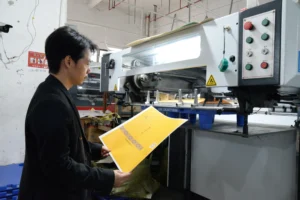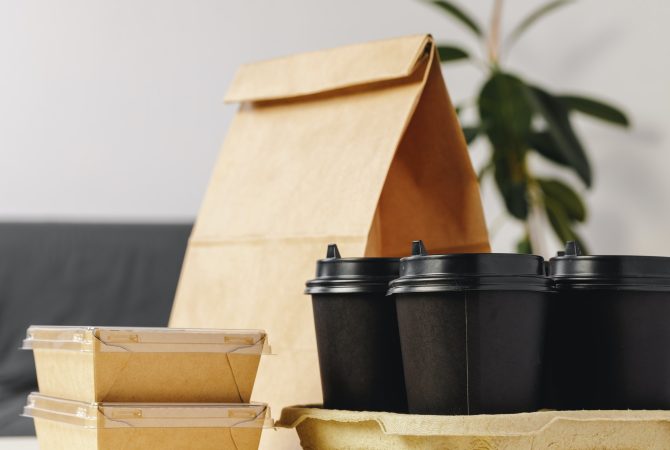Are you struggling to find packaging that fits your brand, protects your product, and doesn’t break the bank?
To get custom packaging for your small business, define your goals, choose suitable materials like kraft paper or coated paper, partner with the right supplier, and test your packaging before full production.
contact us
contact us
contact us
Getting your product into a customer’s hands isn’t just about delivery. It’s about presentation, protection, and leaving a lasting impression. That’s where custom packaging comes in. If you’re a small business, navigating this can feel overwhelming. But with a clear step-by-step process, you can create packaging that looks good, performs well, and fits your budget.
How do you choose the right materials and design for your packaging?
What material should you choose—kraft, coated, or whiteboard paper? And how do you design packaging that reflects your brand while keeping costs in check?
Select materials based on product weight, brand image, and customer expectations. Design should balance aesthetics with usability, using tools and templates offered by packaging suppliers like lvvpack.
Dive Deeper: How to Pick the Right Paper Material for Your Packaging
The material you choose directly affects your product’s safety, your brand’s appearance, and your customer’s perception. For small businesses, it’s important to find a balance between cost, design, and environmental impact. Here’s a breakdown:
| Material Type | Strength | Eco-Friendly | Print Quality | Best For |
|---|---|---|---|---|
| Kraft Paper | Moderate | Yes | Moderate | Rustic, eco-conscious brands |
| Coated Paper | Average | No | High | Vivid color printing |
| Whiteboard Paper | High | Partially | Good | Premium retail display packaging |
| Corrugated Cardboard | Very High | Yes | Moderate | Shipping fragile or heavy items |
| Artistic Paper | Varies | No | Very High | Unique textures and luxury appeal |
Kraft paper is popular for its sustainability. It’s biodegradable and gives a natural look. Whiteboard paper, on the other hand, is stiff and smooth—great for premium boxes. If you want vibrant graphics, go with coated paper. Corrugated cardboard is best for protection during shipping. Match your choice to your product’s needs and your brand’s story.
What’s the first step to creating your custom paper packaging?
Most business owners jump into design too fast—but that can backfire if you haven’t figured out the basics.
Start by identifying your product’s needs—size, fragility, target customer, and your brand goals. Decide if the packaging is for shipping, retail display, or gifting.
Dive Deeper: Define Your Goals and Product Requirements First
Before you choose a single material or design, ask yourself: What’s the purpose of this packaging? Start by measuring your product and noting its weight and how delicate it is. Then think about how your packaging will be used. For example, do you need a shopping bag that people will reuse, or a paper box that can survive shipping?
From there, define your goals. Do you want your packaging to impress customers on Instagram? Reduce environmental impact? Keep costs low? Each of those priorities leads to a different material and design path. For example, if you’re targeting eco-conscious shoppers, kraft paper is an easy win. If you’re in fashion retail and want a luxurious look, whiteboard paper with spot UV coating might suit you better.
Budget matters too. Set a rough idea of how much you’re willing to spend, then find suppliers with low minimum orders. That way, you can test ideas without overspending.
How do you find the right packaging supplier?
Even the best design and material won’t help if your supplier can’t deliver quality on time and within budget.
Choose a supplier with experience in paper packaging, low MOQs, sampling options, and digital design tools. Check customer reviews and portfolio quality.
Dive Deeper: Vetting a Supplier for Small Batch Custom Packaging
Look for a packaging manufacturer who understands small businesses. A good supplier won’t push high-volume orders if you’re just starting out. They’ll offer sampling, digital proofs, and support your design process. I usually recommend suppliers like lvvpack because they’re responsive, affordable, and their digital mockups help you see your design before you commit.
Check their range of paper materials and whether they have printing options that match your branding goals—whether that’s foil stamping, inside printing, or spot color. Ask for samples. You’ll want to test everything, from how your logo looks on kraft paper to how sturdy the bag handles feel.
A good supplier also helps you avoid costly mistakes. For example, they might advise you to adjust your dieline or remind you to leave bleed space on your design. It’s not just about printing—it’s about making the process smooth, even if you’ve never ordered packaging before.
What design elements should you include?
It’s easy to focus only on the logo, but great packaging is more than just a pretty surface.
Design your packaging to reflect your brand identity through logo, colors, fonts, and functionality like easy-open features or custom inserts for a better unboxing experience.
Dive Deeper: Branding and Function Go Hand in Hand
Your packaging should be a visual handshake between you and your customer. Use your brand colors and font consistently. Keep your logo visible but not overwhelming. And make sure the message is clear—even before the customer opens the box.
But don’t stop at looks. Think about how your customer opens the package. Does it tear easily? Does it feel secure? A smart design uses space wisely—maybe a foldable insert holds your product in place, or a QR code leads to your brand story.
For example, adding a thank-you card or tissue paper inside a kraft bag can elevate a simple purchase into something memorable. This kind of thoughtful detail builds loyalty and makes people want to share their experience online.
Get Premium Finishing For Your Designs At lvvpack
Looking for a reliable and nice price supplier? lvvack is your trusted partner for creating stunning designs that leave a lasting impression and add elegance and sophistication to your packaging. Contact us now to order.
Conclusion
Custom packaging is about more than just a box—it’s a strategy. Choose the right paper, supplier, and design to deliver the full brand experience.














